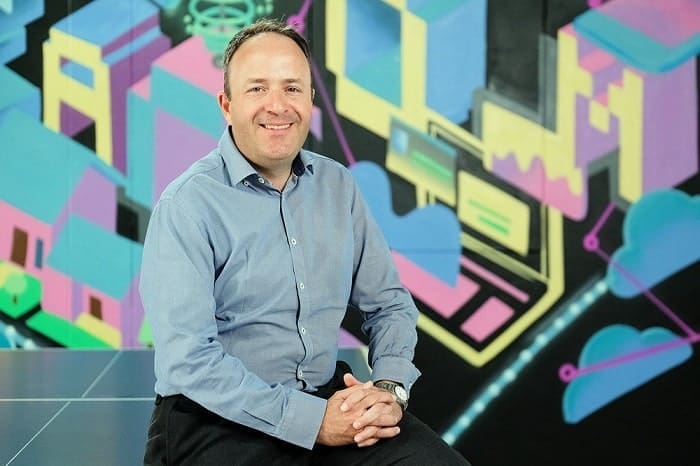As the world moves towards an increasingly digital future, expanded connectivity infrastructure has become a defining feature of a modern economy. It allows people and businesses across the globe to connect with and access a world of digital innovation. Whether it’s for social media and entertainment, or improved business performance through digital processes, connected technologies are now part of nearly every aspect of our daily lives.
Connectivity is vital for the growth and future success of every global economy, the economic benefits of which have been widely researched in many countries. Only recently, however, has a thorough study been conducted on the economic impact of connectivity delivered by submarine fibre optic cables in South Africa. The study, which was conducted by RTI International, finds the overall economic impact of connectivity to be significant, leading to increases in GDP and improvements to the likelihood of being employed. But these economic gains were not broad-based because many South Africans still do not have access to or cannot afford fast and reliable Internet services. So, why are subsea cables so important to our economy, and what can we do to get more South Africans connected?
Transitioning to a digital-first economy
Over the last few decades, South Africa has transformed from a resource-based economy relying on rich mineral reserves, to an economy driven largely by tertiary sectors such as financial and business services, transport and communication, and manufacturing. Unlike more labour-intensive and low-skilled sectors, these sectors all rely heavily on ICT infrastructure that requires connectivity. The study by RTI International demonstrates this, finding that subsea cable connectivity led to a 6.1% increase in GDP per capita between 2009 and 2014. This can be attributed to factors such as technological innovation, access to international markets, and improved education for people living in connected areas.
Connectivity also has a role to play in addressing unemployment, which remains one of South Africa’s most pressing socioeconomic challenges. In the aftermath of the pandemic, unemployment rose to a record high of 34.9% by the third quarter of 2021. The RTI International study finds that people were 2.2% more likely to be employed if they lived within 500 metres of the fibre network. The study also highlights that connecting South Africa’s most densely populated areas would translate to the greatest increases in total employment.
Connecting Africa with the world
Subsea fibre optic cables are the backbone of the Internet. But before Africa had a subsea cable system, the entire continent relied on sporadic satellite connections that made Internet access largely inaccessible and expensive. At the same time, South Africa’s telecommunications market suffered because it did not have a competitive structure, which changed in 2008 when a court ruling allowed other industry players to build infrastructure and provide Internet services.
One year later, Africa saw its first commercial undersea cable. The SEACOM cable spans 17,000km and connects the Eastern and Southern coasts of Africa with the rest of the world with faster and more affordable fibre connectivity. The RTI International study credits this subsea cable for disrupting the market, resulting in a substantial decrease in wholesale prices for direct fibre and an increased uptake of broadband connectivity.
Since then, South Africa’s fibre-to-the-home connectivity has expanded significantly, connecting over 600,000 homes in a market that was growing more than 30% per year in 2019. Now, 90% of South Africa’s population also lives within 10km of a fibre line because of our extensive domestic network in most major cities and towns. But even though widespread fibre penetration is eminently achievable, only 1.2% of households in rural areas had access to Internet at home in 2019, compared to 15.4% of households in metropolitan areas. And despite the fact that mobile broadband coverage reaches over 95% of the population, more than 30% of South Africans still do not use the Internet.
One reason for this is the prohibitive cost of mobile data, and the lack of incentives for last-mile infrastructure development beyond the existing fibre network. While fibre connections require a higher initial investment, fibre ultimately pays its dividends by being orders of magnitude cheaper than prepaid mobile data and providing a much faster and more reliable connection.
Looking forward
Digital technologies are evolving rapidly, which is why we need a modern approach to policy and regulation to keep up with other digitally driven economies. Our policy and regulatory environment in the telecommunications sector has been characterised as sluggish and uncoordinated, such as the failed attempt to deliver universal broadband access through SA Connect.
But there are many reasons to be optimistic. Our government has recognised the importance of the Fourth Industrial Revolution (4IR) for the future of our economy, and at a BRICS meeting on 11 November 2021, our Minister of Communications announced a fast-track programme that aims to connect all South Africans to the Internet within 24 months. Additionally, government agencies will be funding the development of affordable Internet access for low-income neighbourhoods. Other initiatives like Project Isizwe are also helping provide local communities with uncapped Wi-Fi for as little as R5.
There’s no doubt that South Africa needs more partnerships between government, NGOs, and the private sector to help narrow the digital divide. By allowing more people and businesses to participate in the digital economy with affordable connectivity, we can create more jobs, accelerate economic recovery, and pave the way forward to a more connected future.
- Steve Briggs, Chief Sales & Marketing Officer at Seacom
